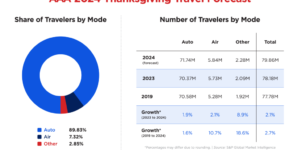Human-centered design hasn’t yet taken off in the world of insurance, but Christopher Lowell, who heads up an innovation lab at The Hartford, sees the approach as the cornerstone of both the lab and the future insurance innovation landscape.
 “A mixture of forces, [including] regulation and contract-based language that we use, has led the industry down a path of being much more product-focused—incrementally improving our products rather than getting deep into what the customer’s needs actually are,” he told Celent’s Mike Fitzgerald, during a recent conversation. Fitzgerald, who has been studying insurance innovation for years, admitted that the idea of applying a human-centered design approach still sounds theoretical in an industry where it’s underutilized, prompting the explanation from Lowell, head of the Small Business Innovation Lab at The Hartford.
“A mixture of forces, [including] regulation and contract-based language that we use, has led the industry down a path of being much more product-focused—incrementally improving our products rather than getting deep into what the customer’s needs actually are,” he told Celent’s Mike Fitzgerald, during a recent conversation. Fitzgerald, who has been studying insurance innovation for years, admitted that the idea of applying a human-centered design approach still sounds theoretical in an industry where it’s underutilized, prompting the explanation from Lowell, head of the Small Business Innovation Lab at The Hartford.
Lowell went on to contrast the more typical types of innovation being pursued in the industry with the possibilities that lie ahead.
“With incremental improvements, you can make your current products better. But with human-centered design, you can actually inspire new products that have never seen the light of day before.”
Responding to Fitzgerald, Lowell noted that “there are [insurance] organizations that focus substantially more on incremental improvement and do a great job at it, but it doesn’t necessarily inspire new products and ideas.”
“This lab focuses on the future of new business and operating models of products and services,” he said.
Lowell said it can be difficult for organizations to absorb human-centered design. It is a way of thinking that’s unique and different, he said. In addition, “for all of its speed in terms of putting something in market, it takes its time and is relatively slow [in the process of] sitting down and spending quality time with customers.”
“You might spend an hour-and-a-half just standing in a small business owner’s store observing. And to be perfectly honest, that’s a difficult ask—to ask a senior executive to come along the journey with you and just say, ‘Stand here for a while and watch.'”

“You need to find the right leaders, who have a visionary view of what they want their business to become,” he said, also recommending that innovation leaders need to do a little bit of vetting before presenting human-centered design experiences to senior leaders—so that “one poor experience doesn’t have them concerned over the entire concept.”
Tangible examples of the approach at work in the insurance and risk management space are still lacking, Lowell noted when Fitzgerald asked for something to move him past a theoretical understanding of the concept. “The examples that we hope to bring, and the reason they will be tangible, is because they’ll be so narrowly focused on one particular niche,” he said.
He continued: “Success at the Small Business Innovation Lab at The Hartford in 2019 would show that we can create a product that is fantastic and delightful for a really small set of customers. And then we’ll realize that once we do that, we have the daunting task of having to do that again 50,000 more times to actually cover the entire small business owner landscape in the U.S. But at least we will have proven that that’s the way to go.”
“Those tangible results—actual pain points that small business owners in their honest moments tell people who are truly listening during an empathy interview or that we observe while standing in their shops—those are real. That’s what in my mind it means to be tangible,” he said.





















 Allstate October Catastrophe Losses of $286M Include Milton, Helene
Allstate October Catastrophe Losses of $286M Include Milton, Helene  Swiss Re Execs Sleeping Well After $2.4B Q3 Reserve Boost
Swiss Re Execs Sleeping Well After $2.4B Q3 Reserve Boost  Bumps Ahead as Disruption Drives Changes in Auto Insurance
Bumps Ahead as Disruption Drives Changes in Auto Insurance  Allstate Thinks Outside the Cubicle With Flexible Workspaces
Allstate Thinks Outside the Cubicle With Flexible Workspaces 




